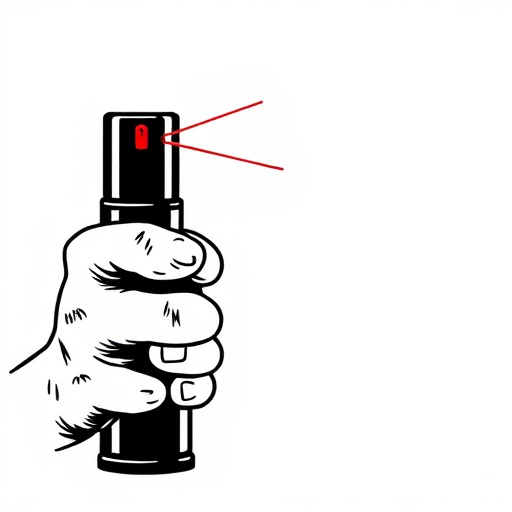Police-grade bear spray, with high capsaicin concentrations and robust packaging, is designed for tactical situations. Effective application involves targeted spraying at key body areas from a safe distance, utilizing quick bursts with proper technique to maximize coverage while minimizing collateral damage. Safety precautions include avoiding accidental spraying, storing the spray securely, understanding wind conditions, protecting oneself from inhalation, and preparing for multiple bursts in aggressive encounters.
“Discover the power of police-grade inflammatory pepper spray compounds—a game-changer in personal defense. This article unveils the key features and benefits of this potent tool, offering a comprehensive guide on its effective application. Learn the best bear spray application techniques, from preparation to deployment, ensuring maximum impact. Additionally, we’ll shed light on critical safety precautions and common mistakes to avoid, empowering you with knowledge for responsible use. Uncover why understanding these aspects is essential for your safety.”
- Understanding Police-Grade Pepper Spray Compound: Key Features and Benefits
- Best Bear Spray Application Techniques: Step-by-Step Guide for Effective Use
- Safety Precautions and Common Mistakes to Avoid When Using Bear Spray
Understanding Police-Grade Pepper Spray Compound: Key Features and Benefits
Police-grade inflammatory pepper spray compound is designed with specific features and benefits tailored to law enforcement needs. Unlike civilian-use sprays, these specialized products incorporate advanced formulations and robust packaging to withstand intense scenarios. Key features include high concentration of capsaicin, the active ingredient responsible for the burning sensation, along with added agents to enhance visibility in low-light conditions and quick breakdown times, ensuring officers can safely disperse threats swiftly.
The benefits extend beyond immediate incapacitation. Police-grade pepper spray is formulated to be non-irritating to police officers’ eyes and skin, minimizing secondary injury during use. Moreover, best bear spray application techniques emphasize targeted spraying at key body areas, maximizing the effect while minimizing collateral damage. Understanding these features and proper application techniques are crucial for effective deployment, ensuring officer safety and success in various tactical situations.
Best Bear Spray Application Techniques: Step-by-Step Guide for Effective Use
When it comes to the best bear spray application techniques, understanding the right approach is crucial for effectiveness. Start by ensuring proper preparation; check the expiration date and test the spray mechanism before venturing into the wild. For optimal range, hold the can at arm’s length, pointing towards the threat, and depress the trigger firmly in a smooth, continuous motion.
A step-by-step guide includes aiming for facial and eye protection as the primary targets, as these areas are sensitive and crucial for bear behavior modification. Spray in quick bursts, allowing about 2-3 seconds between each to maximize coverage. Maintain distance and avoid direct contact while adhering to local regulations regarding bear spray use. Practice these techniques to gain confidence in your ability to defend against potential bear encounters.
Safety Precautions and Common Mistakes to Avoid When Using Bear Spray
When using bear spray, safety is paramount. Always ensure you have a clear understanding of the best bear spray application techniques to maximize its effectiveness and minimize risks. Never point the nozzle at anyone, including yourself or animals, as accidental spraying can cause serious harm or even death. Keep your bear spray readily accessible, but out of reach of children and pets. Store it in a cool, dry place, away from direct sunlight and extreme temperatures.
Common mistakes to avoid include using the spray too far away from an approaching bear, which may not provide enough time for deterrence. Additionally, failing to follow the instructions on the label regarding wind conditions can reduce the spray’s accuracy and range. Avoid inhaling the spray yourself by wearing a face mask or covering your mouth and nose with a shirt. Lastly, never assume that one application is enough; be prepared to use multiple bursts if needed, especially for larger bears or aggressive encounters.
Police-grade inflammatory pepper spray, especially designed for bear encounters, can be a powerful tool for self-defense. By understanding its key features and following best practices like proper application techniques detailed in this guide, individuals can effectively deter aggressive bears. However, safety precautions must always be prioritized to avoid common mistakes and ensure the spray’s effectiveness. Remember, knowledge is key when it comes to bear spray use – stay prepared, stay safe.
